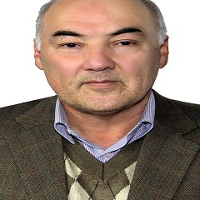Effects of Aqueous Extract of Saffron on Gamma-Amino Butyric Acid Content in Rat Hypothalami
Author(s):
Abstract:
Background
Preliminary studies revealed that 4-aminobutyric acid (GABA) is a key and major inhibitory neurotransmitter in the brain. Evidence from many animal studies and even some clinical studies indicate that GABA is responsible for regulating behavior and also plays an important role in brain functions. Previous studies presented Glutamic acid decarboxylase as a catalyst for the conversion of glutamic acid to GABA.Objectives
The aim of this study was to evaluate the effects of saffron on GABA content in the hypothalamus of rats.Materials And Methods
Male rats weighing 190 - 210 g were used. They were maintained in a temperature-controlled room with a 12-hour light/dark illumination cycle. The rats were fed standard pellet feed and had access to water ad libitum. The animals were divided into three groups: The first group received a 250 µL intraperitoneal injection of 0.05 g/mL saffron (Group I). The second group received a 250 µL intraperitoneal injection of 0.1 g/mL saffron (Group II). The third group acted as the control and received only water (Group III). The time intervals chosen for this experiment were 1, 2, 4, and 8 weeks following the administration of saffron. At least six animals were assigned to each experimental group. At each time interval, the animals were anaesthetized and brain tissue extracted, hypothalami separated and homogenized in PBS solution, rinsed with PBS, re-filtered, and centrifuged at 1200 g for 10 minutes.Results
In this study, both doses of saffron (0.05 g/mL [Group I]; and 0.1 g/mL [Group II]) caused significantly increased GABA content in each hypothalamus. GABA in Group I increased significantly compared to the control group (1.00 ± 0.05 [mean ± SD, n = 8] vs. 0.29 ± 0.05, mM). GABA in Group II also increased significantly compared to the control group (1.45 ± 0.07 [mean ± SD, n = 8] vs. 0.29 ± 0.05, mM). The effect of saffron on GABA was also dose dependent; the only exception occurring during the final time interval for the 0.1 g/mL saffron concentration.Conclusions
The results of this study demonstrated a significant increase in hypothalamus GABA content from saffron administration. One explanation for this observation could be the stimulation of glutamic acid decarboxylase the primary enzyme responsible for the production of GABA. Saffron may be a potential therapeutic agent for improving neurotransmitter levels.Keywords:
Language:
English
Published:
Avicenna Journal of Medical Biochemistry, Volume:4 Issue: 2, Dec 2016
Page:
4
magiran.com/p1588786
دانلود و مطالعه متن این مقاله با یکی از روشهای زیر امکان پذیر است:
اشتراک شخصی
با عضویت و پرداخت آنلاین حق اشتراک یکساله به مبلغ 1,390,000ريال میتوانید 70 عنوان مطلب دانلود کنید!
اشتراک سازمانی
به کتابخانه دانشگاه یا محل کار خود پیشنهاد کنید تا اشتراک سازمانی این پایگاه را برای دسترسی نامحدود همه کاربران به متن مطالب تهیه نمایند!
توجه!
- حق عضویت دریافتی صرف حمایت از نشریات عضو و نگهداری، تکمیل و توسعه مگیران میشود.
- پرداخت حق اشتراک و دانلود مقالات اجازه بازنشر آن در سایر رسانههای چاپی و دیجیتال را به کاربر نمیدهد.
In order to view content subscription is required
Personal subscription
Subscribe magiran.com for 70 € euros via PayPal and download 70 articles during a year.
Organization subscription
Please contact us to subscribe your university or library for unlimited access!


